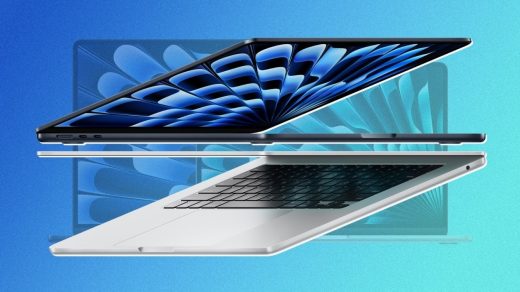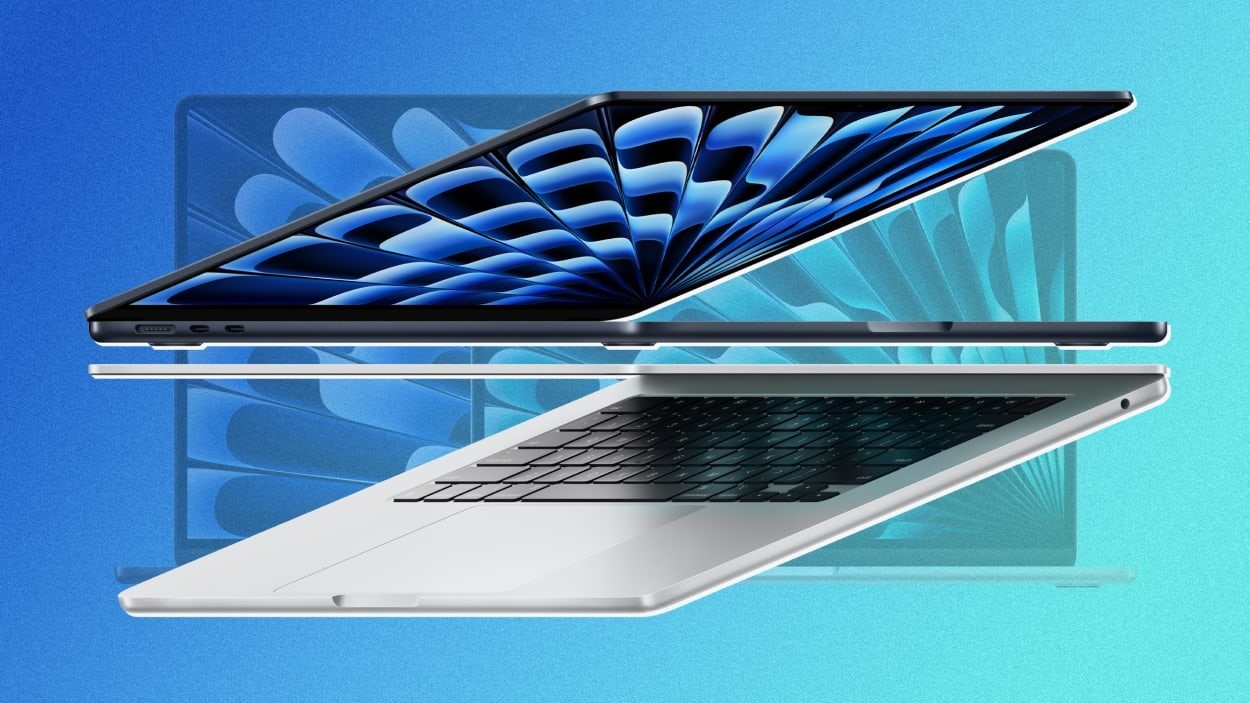2024 MacBook Air review: Dawn of the AI laptop
To get the basics out of the way first: Apple’s new MacBook Airs, which began shipping on March 7, are what computer nerds call a speed bump update. Available in 13-inch and 15-inch versions, they’re nearly the same laptops as their immediate predecessors, with Apple’s faster M3 chip swapped in for the previous generation’s M2. They also support the new Wi-Fi 6E wireless networking standard and, when closed, can drive two external displays.
If you already own a recent MacBook Air—or even one dating to the first model to use an Apple-designed chip in 2020—you almost certainly don’t have an urgent need to buy a new one right now. Even Apple obliquely acknowledges this in its marketing materials by mostly comparing the new Airs to generations-old versions based on Intel processors. If, on the other hand, you are still clinging to an Intel MacBook Air that’s showing its years, you should find its 2024 descendants totally worth the price of admission. (That begins at $1,099 for the 13-inch version and $1,299 for 15-inch; Apple provided me with samples of each for review.)
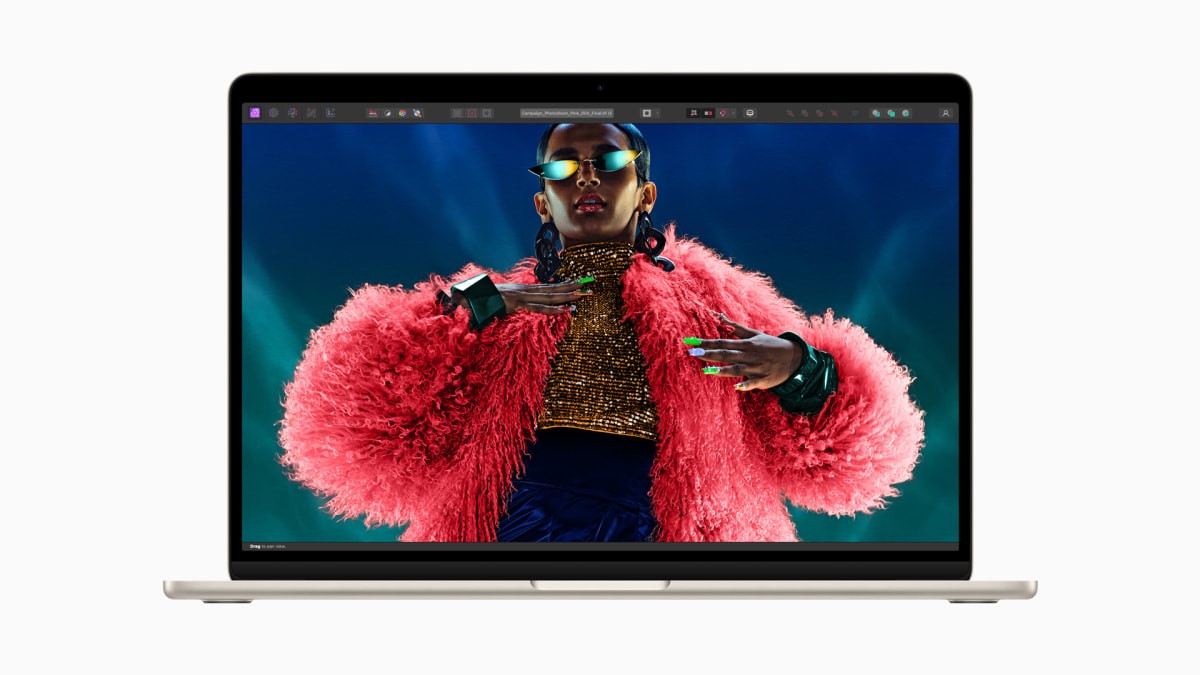
Still, even if the new MacBook Airs are incremental upgrades to what were already fabulous laptops, they’re arriving at an intriguing time. It’s been years since PC makers benefited from an epoch-shifting, sales-boosting moment akin to the advent of multimedia and the World Wide Web in the 1990s, and in the current mania for AI, they sense a similar moment in the making. HP, for example, is bragging that it just introduced “the industry’s largest portfolio of AI PCs.” Longtime chipmaking rivals Intel and AMD have also been talking up the AI PC concept, as has Qualcomm, whose first really serious PC processor is due to show up in laptops in mid-2024.
Among those obviously excited by the opportunity is Apple, whose press release about its new MacBook Air models mentions “AI” 10 times and calls the Air “the world’s best consumer laptop for AI.” (I’m pretty sure I know its pick as the best professional laptop for AI.) The references are a striking departure from the company’s past preference for machine learning, a more precise term that helped it avoid sounding like it was merely hopping aboard an industry bandwagon.
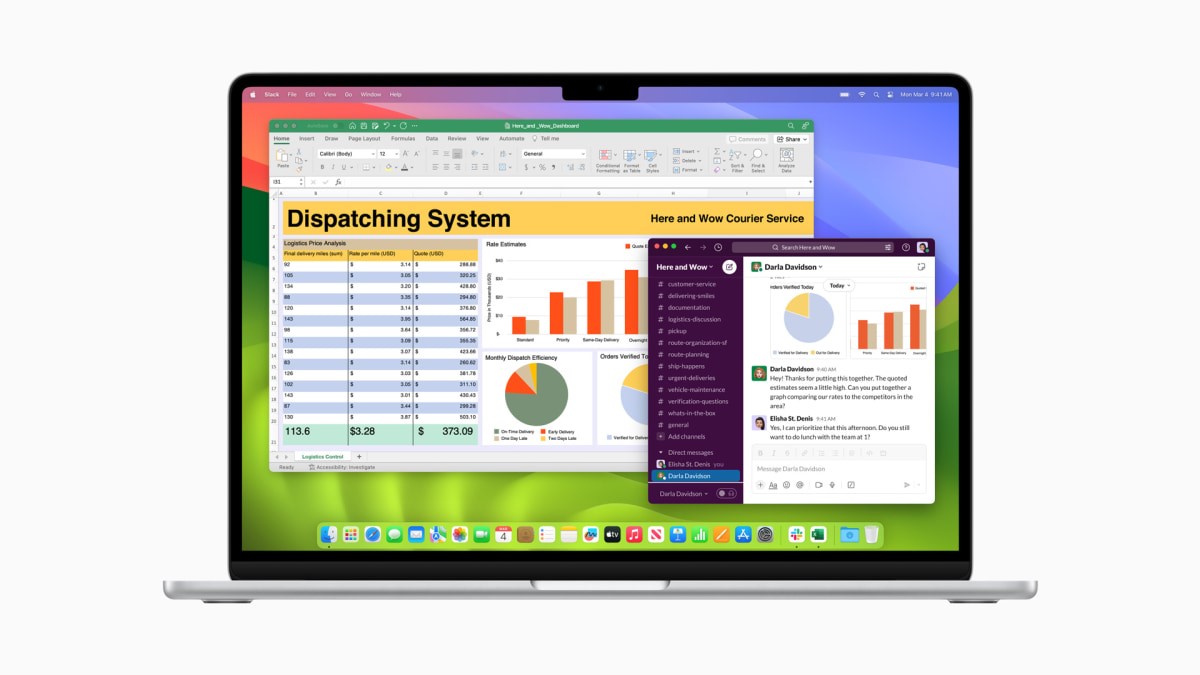
The fact that Apple is only now warming up to talking about AI belies its long-standing commitment to the technology. Way back in 2017, for example, the iPhone X introduced the neural engine, a new processor optimized for AI tasks. In 2020, when Macs started using Apple-designed M1 chips, they got the neural engine, too. The company says the version in the new MacBook Air’s M3 chip is 60% faster than the M1 original. Other aspects of the M3 chip, such as its 8-core CPU and 10-core GPU (8-core in the base $1,099 13-inch Air), also provide the kind of computational muscle required for AI.
When Apple touts the benefits of its AI-forward hardware, it often cites examples that aren’t all that in-your-face. AI, for instance, enables the Pixelmator Pro image editor to preserve crisp detail in a photo even if you dramatically bump up its resolution. Lots of other examples quietly add up to a meaningful part of the modern Mac experience.
At some point, AI could lead to the Mac—and other personal computing devices—making a bigger break with the past akin to the original 1984 Mac’s mainstreaming of the graphical interface. But for now, AI is unlikely to disrupt many of the fundamental elements that make a MacBook Air a MacBook Air.
Unlike makers of Windows PCs, Apple hasn’t tried to reimagine the laptop with touchscreen capability, fancy rotating hinges, folding screens, or other features far afield of the classic clamshell design. Instead, it focuses on nailing the stuff that buyers have always cared about: performance, battery life, screen and trackpad quality, and portability. In those respects, the new MacBook Airs shine, though usually no brighter than the versions they’re replacing.
For example, their official battery life of up to 18 hours of video playback and 15 hours of wireless web access—plausible estimates, in my experience—are unchanged. Jason Snell of Six Colors ran speed benchmarks on the new machines and came to the conclusion you might expect: The M3 MacBook Airs are a bit quicker than the M2 MacBook Airs without intruding on the MacBook Pro’s high-end M3 Pro and M3 Max chip options. The M3 chip does offer real advances over the M2, such as hardware-assisted ray-tracing for more realistic 3D games, but as an owner of a nearly-new M2 MacBook Air myself, I don’t feel overly deprived.
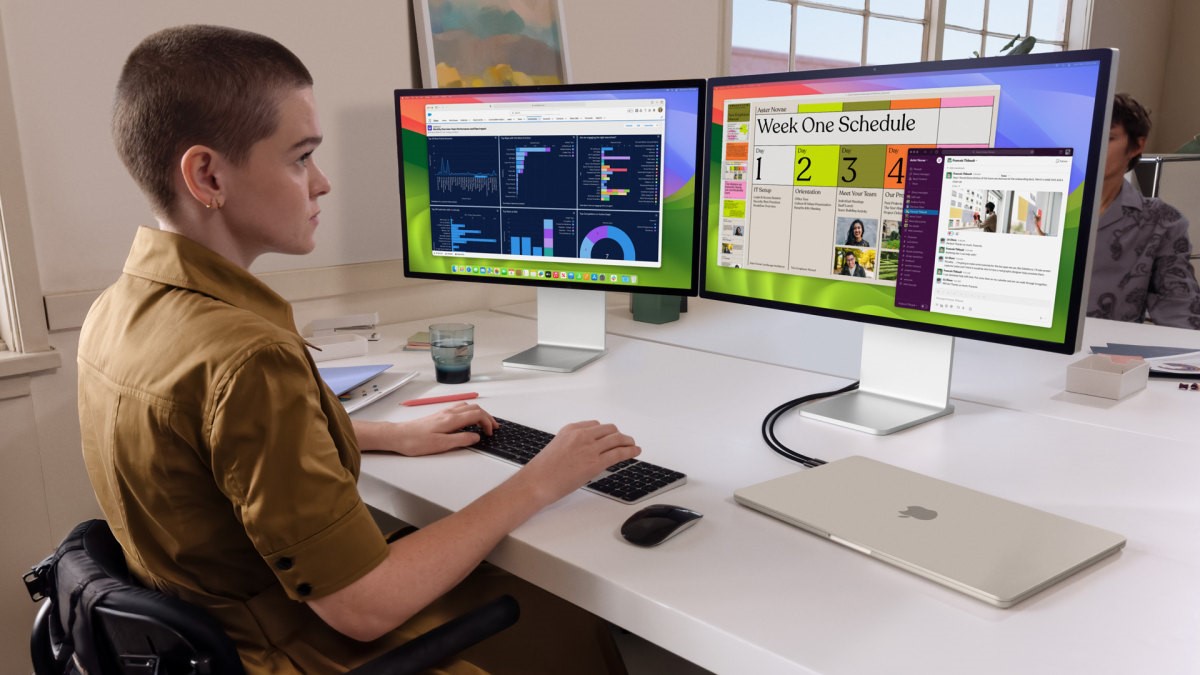
Apple is making a big deal of the new models’ ability to drive two external displays, as long as the laptop is closed. That’s hardly a revolutionary feature—indeed, multiple-monitor support was one place where M1 and M2 MacBook Airs lost ground compared to their Intel-based predecessors. In the Apple silicon era, the desire to hook up more than a single external display has been an incentive to spring for one of the MacBook Pro’s pricier configurations. Now that the M3 MacBook Air can do the job, an even higher percentage of Mac purchasers will find the Air to be all the MacBook they need.
Along with the new 13-inch and 15-inch MacBook Airs, Apple loaned me two 27-inch Cinema Displays, which I used with the new Airs; a Bluetooth keyboard; and a mouse. In recent years, I’ve spent more hours hunched over my 11-inch iPad Pro than any other computer; even my own 15-inch MacBook Air’s built-in display feels like a vast parcel of screen real estate. So working with two Cinema Displays’ worth of real estate—on real projects such as writing this article—has been a tad overwhelming, in a good way. For people with the desk space and budget, it might be the best thing about the new Airs.
It’s nice that MacBook Airs have gotten better at channeling their inner desktop computer, but as always, their thin, light design is key to the Airs’ appeal, as you can tell by their omnipresence at cafés and other ad-hoc workplaces. Having introduced a surprisingly totable 15-inch version last year, Apple now has an Air for just about everybody, not counting those who still pine for the ultra-portable, sadly discontinued 11-inch MacBook. For the budget-conscious, last year’s 13-inch model with the M2 chip is still around at a lower starting price of $999; I’d recommend scrounging up the additional $100 necessary to buy this year’s M3 model, whose improvements should extend its useful life a bit past the M2 Air’s expiration date in a few years.
Speaking of the future, Apple surely envisions it involving more ambitious generative AI running right on its computers rather than on distant servers, which is where ChatGPT, Gemini, and innumerable Microsoft Copilots do their heavy lifting. Language models that are local as well as large—call them LLLMs—could do plenty to safeguard users’ personal data, a goal in line with Apple’s embrace of privacy as a core design principle. More than any other type of AI, they might also push a chip such as the new MacBook Air’s M3 to its limits.
Given that even a fast laptop offers only a microscopic percentage of the processing power of a cloud-based supercomputer, on-device generative AI isn’t going to be a better ChatGPT than ChatGPT. Or at least I wasn’t impressed with my encounter with FreeChat, a Mac-based chatbot that Apple demoed during a media briefing for the new MacBook Airs: It knows too little and is too prone to making stuff up to be competitive. But the potential to do truly new things is there—such as the generative AI version of Siri that my colleague Michael Grothaus recently theorized might be coming.
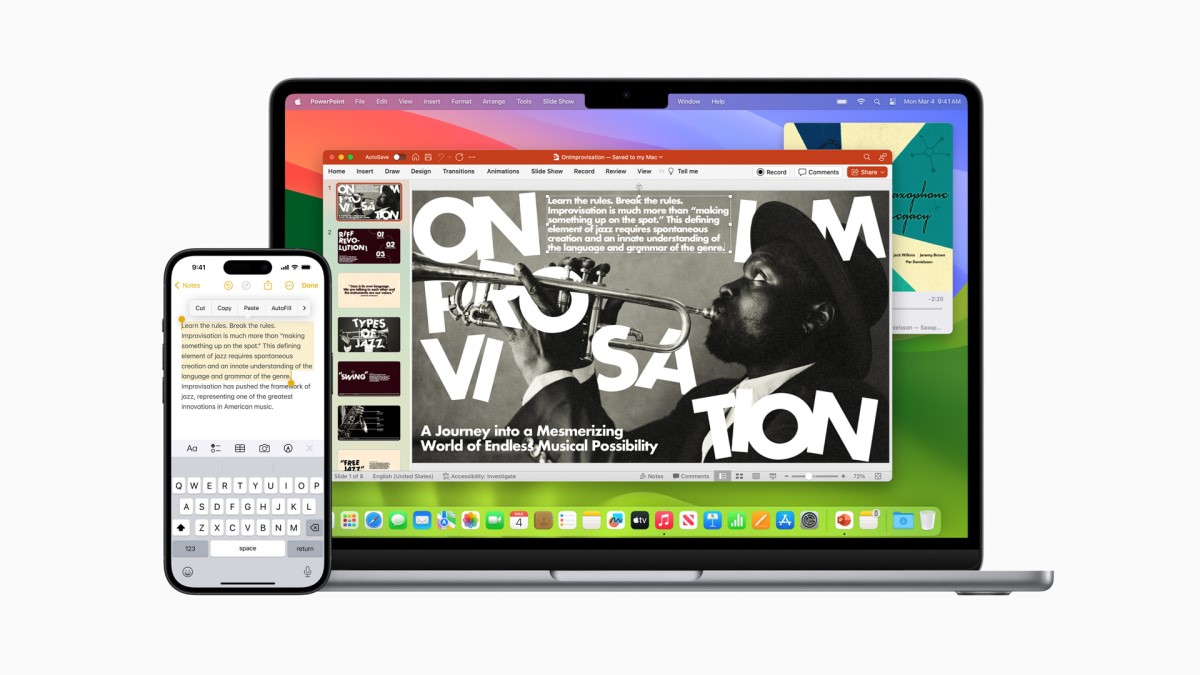
As Apple’s comparisons of its latest laptops to aging Intel-chip models show, many folks hold on to their Macs for a looooong time before upgrading. If AI works its way into more and more of our everyday activities over the next few years, millions of people will experience it on a computer they buy today. Which means that being “the world’s best consumer laptop for AI” isn’t just about what a 2024 MacBook Air does today, but what it will be capable of doing in 2025, 2026, and beyond. And on that front, the software updates Apple previews in a few months at its WWDC keynote could be revelatory in ways the new Air hardware isn’t—at least yet.
(17)

